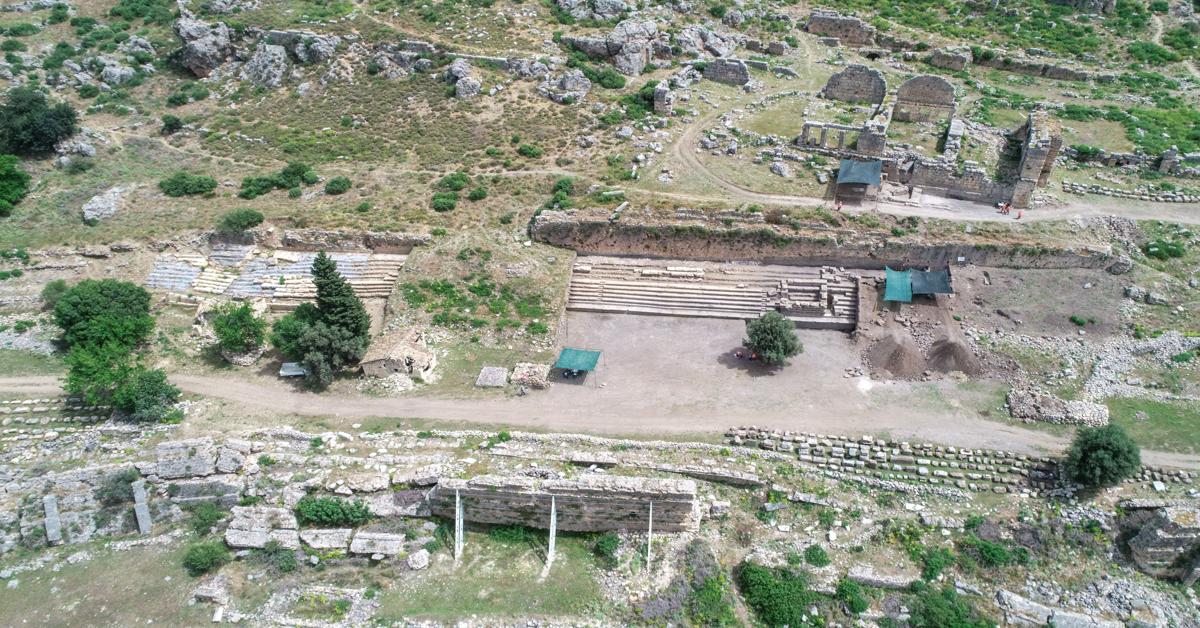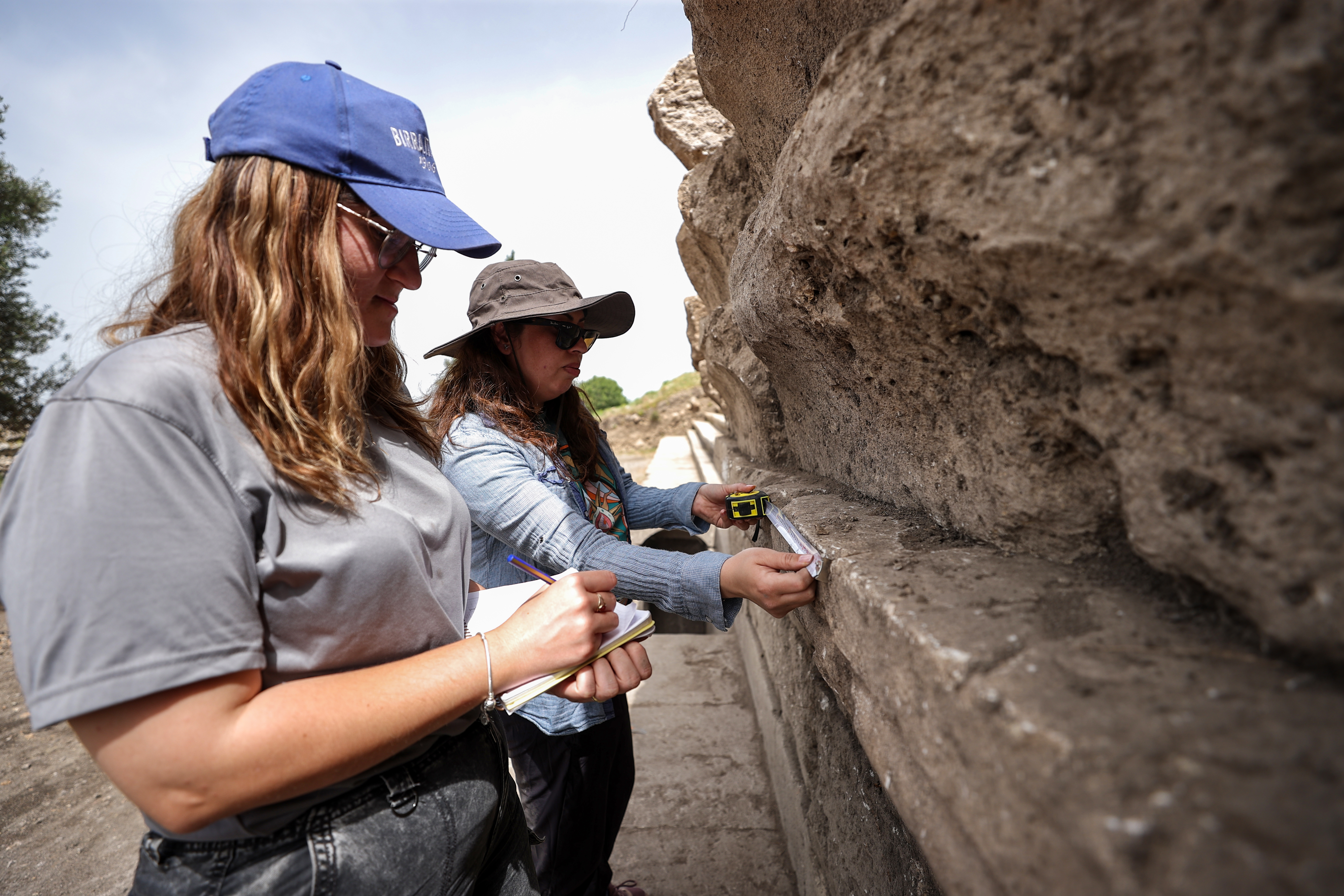
A Roman stadium has been discovered and 25% of the structure has been unearthed during ongoing excavations at the ancient city of Sillyon in the Serik district of Antalya, Türkiye.
The ancient city, which was founded on a high hill in the early 2,000s B.C. due to security concerns at the time, contains various structures from the Hellenistic, Roman, Byzantine, Seljuk and Ottoman periods.

With the permission of the General Directorate of Cultural Assets and Museums of the Ministry of Culture and Tourism, a team of 40 people headed by Pamukkale University faculty member Associate Professor Dr. Murat Taskiran continues to work to uncover the history of the region and allow access to tourism.
Stating that they concentrated their work on the Roman-era stadium, Taskiran told an Anadolu Agency reporter that the stadium under tons of soil is 254 meters (833 ft) long and 48 meters (257 ft) wide.

Stating that they uncovered 25% of the stadium, Taskiran said, “The excavations, which started in 2020, gained momentum in 2022 when it was included in the Presidency's Decisive Excavation List.”
With a capacity of 10,000 people, the historical structure stands out among the stadiums in the region with its capacity, shape and size.

Explaining that sports competitions and festivals were held in the stadium in ancient times, Taskiran said, “Based on the materials recovered from the site, we can say that the construction of the stadium started in the 1st century A.D. and was used until the 5th century A.D. This became clear in excavations we carried out in the last phase. We have determined that there was an attack on Sillyon and that the stadium was destroyed during this attack. It is also possible to say that a canopy covered with a wooden structure was constructed on the eastern wing of the building.”
Taskiran said that they not only excavated the site but also carried out restoration and conservation works.
Source: Newsroom